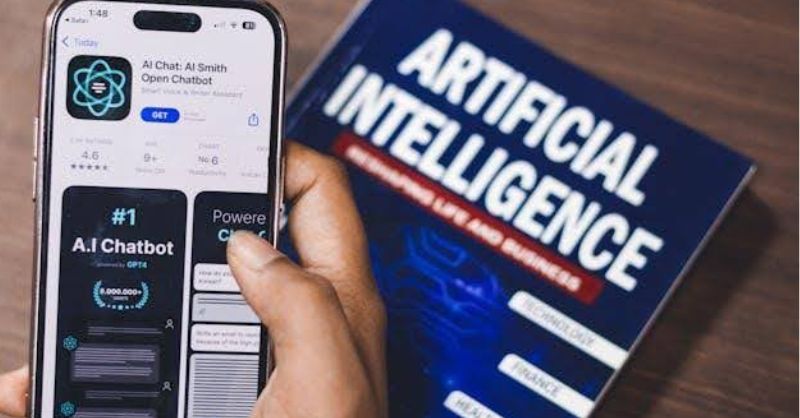Artificial Intelligence (AI) is changing the face of education. Using it has many advantages such as more personalized and accessible learning. When assessing its usefulness in education, it is important to consider both the pros and cons of AI. How can AI help students? An understanding of it is essential to determine how it can help.
Advantages and disadvantages of AI
AI simulates human intelligence. It allows machines to think and learn. They can perform tasks that humans would usually perform. An advantage of AI is that it can automate repetitive tasks. This saves time and reduces human error. Another benefit is that it is available all the time. Using AI also has disadvantages. AI lacks the creativity of humans which comes from imaginative thinking and emotional depth. It doesn’t have empathy and doesn’t understand complex emotions.
Students at college these days use AI to complete their assignments but this has a number of disadvantages. Too much dependence on tools prevents them from learning. They are only as good as the data they train on and can’t produce original ideas. There’s also the risk of them producing misinformation and results that are biased. Students may ask “Can I pay someone to do my homework?” The solution is to use professional writers who excel in doing homework and all other types of academic papers. A human writer uses critical thinking skills and creativity to do homework for you which means the assignments score highly over the AI tools and follow academic integrity rules.
Personalized learning and recommendations
One of the pros of AI in education is that AI algorithms help to analyze student needs and preferences. It can create learning paths that adjust based on their progress and learning styles. Instruction and resources can be customized to suit them. When the material isn’t too easy or difficult for them, it increases their engagement and motivation. With adaptive learning platforms and personalized recommendations, they can become lifelong learners who keep acquiring knowledge and skills.
AI tutors
Is AI a good thing in education? One of its advantages is the ability to use virtual tutors. Virtual tutors use natural language processing and machine learning algorithms. This enables them to have real-time conversations with students. Students don’t have to wait for educators to offer feedback. A virtual tutor can:
Answer questionsProvide feedbackOffer explanationsPromote self-directed learning
Accessibility
The best AI for students can help to address diverse learning needs. This involves the use of technologies like computer vision and speech recognition. These technologies help students with vision or hearing impairments. Real-time captioning can help students who speak foreign languages. Today students can access educational resources no matter where they live or their economic status. The benefits of education that are more accessible and inclusive are a major advantage of the use of AI.
Picture credits: Unsplash
Automation of grading
Benefits of AI in education include using it for grading of quizzes, exams, assignments, etc. Students can get feedback quickly. The AI can check their responses and see where they need to improve. It can also offer suggestions and resources to help them keep learning. Quick feedback helps students to make speedy progress. They can keep growing and developing without obstacles.
Collaborative learning
How can AI help students? Virtual classrooms can use AI technologies to facilitate communication and collaborative learning. This creates a dynamic environment with everyone offering ideas and solving problems together. When students learn to collaborate it prepares them for today’s workplace where collaboration is essential.
VR and AR
Using AI with virtual reality (VR) and (AR) can make any space into a learning space.
VR simulations can bring complex concepts to life. This allows students to explore and learn without pressure or danger. They can have repeated opportunities to practice.Personalizing simulations according to the needs of individual students is possible using AI algorithms.Students can even visit remote locations, do activities there, and or meet other students.
Career guidance
AI can analyze the skills and interests of students to offer them career guidance. They can receive suggestions about what career paths to follow and what skills they need for these careers. This can help students to make better decisions about their futures. The algorithms also take market trends into account. Suggestions will align with the needs of the current job market.
Future advantages and considerations
With all the advantages of AI, it is also important to take into account its potential disadvantages. Educators need to explore its potential to understand more about how to use it in learning. It may be helpful to ask why AI should not be used in education. This could help them to understand the right ways to use it. Opponents of using AI for education may feel it encourages students to take the easy route and not develop their knowledge and skills.
Some may ask “Why is AI bad for society?” As society becomes increasingly reliant on AI, there is a danger of too much reliance on it. It’s essential for educators to understand how to adapt AI tools to the needs of students.
Conclusion
AI is here to stay and using AI in education is likely to have many advantages in the future. It can empower educators, make learning more accessible, and personalize it to meet the needs of students. On the other hand, risks such as student isolation, bias, and misinformation must be kept in mind. There are always advantages and disadvantages that come with technological advances. Successfully using AI in education requires a thoughtful and balanced approach.
The post The future advantages of Artificial Intelligence for students appeared first on Tech Funding News.
